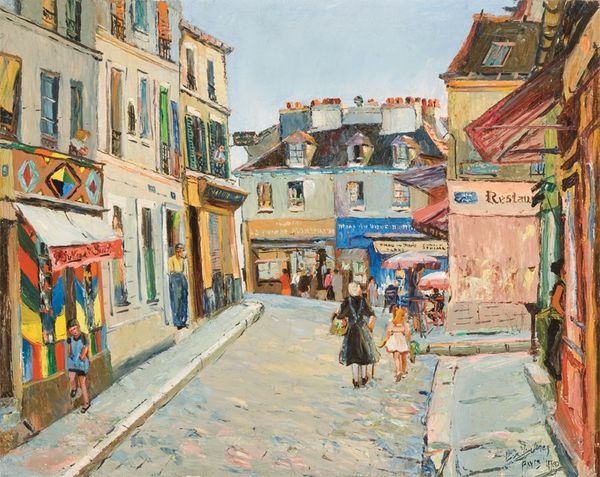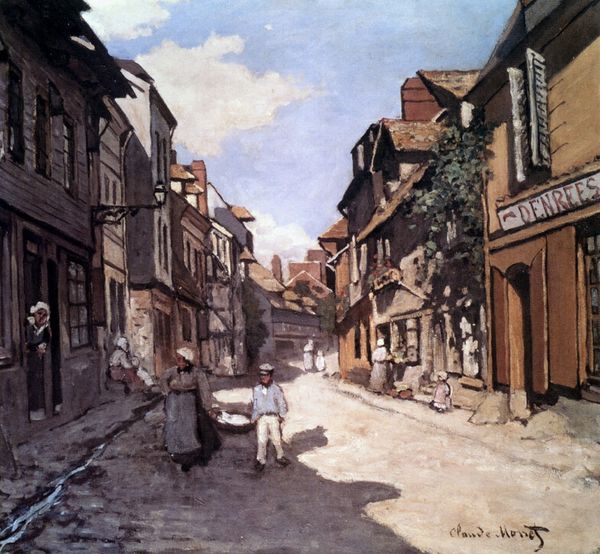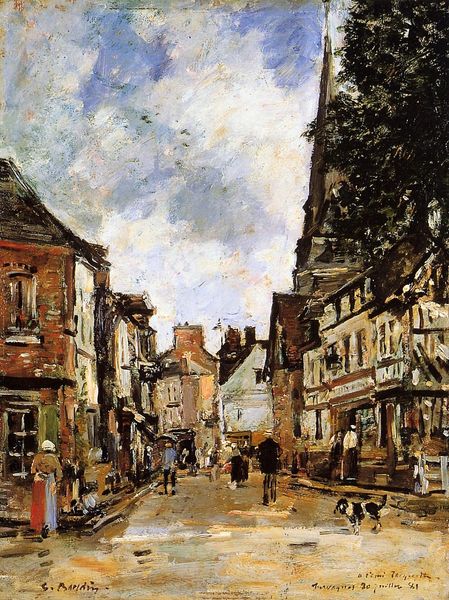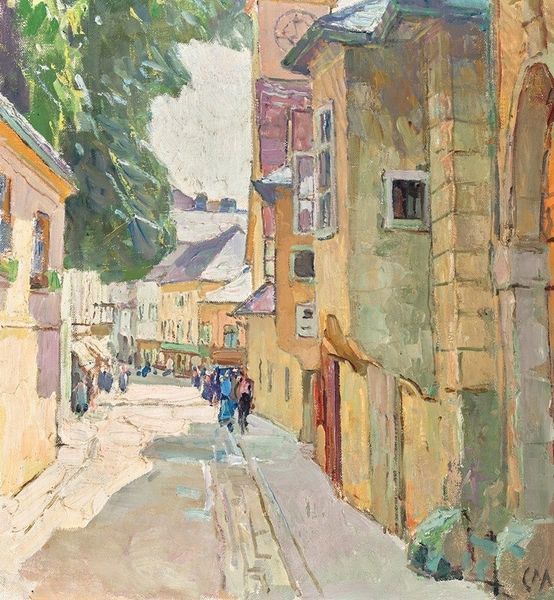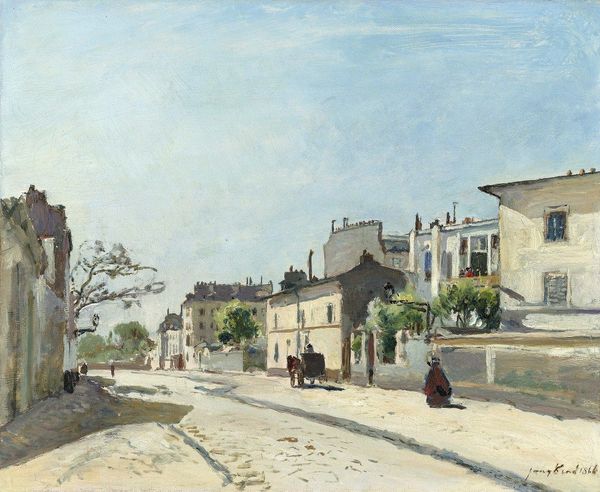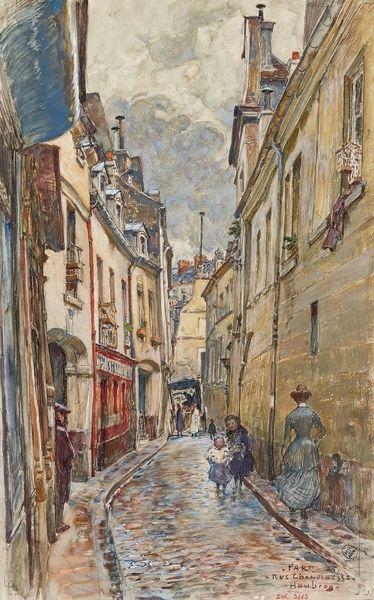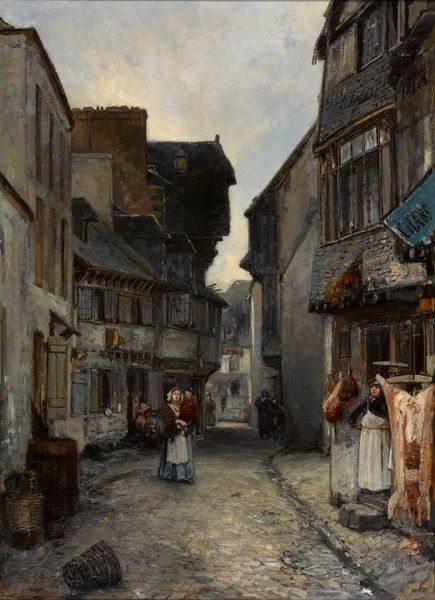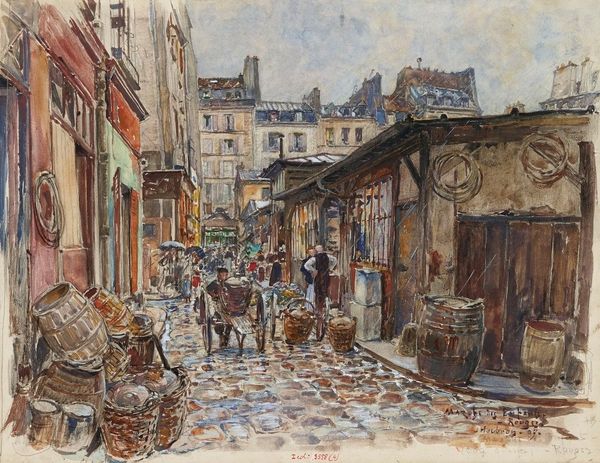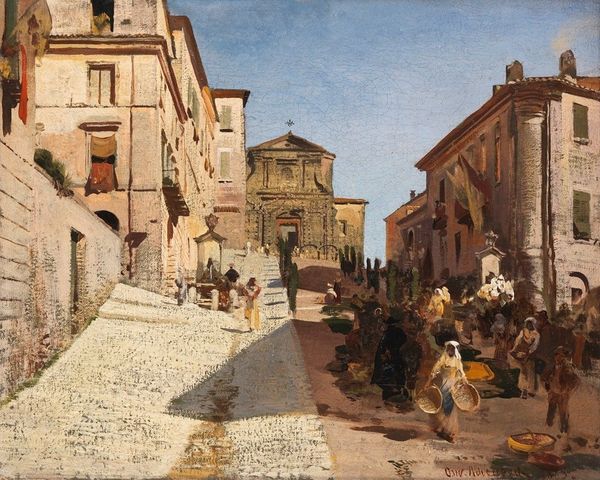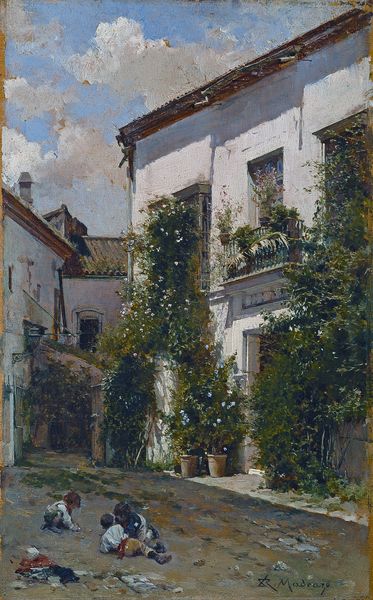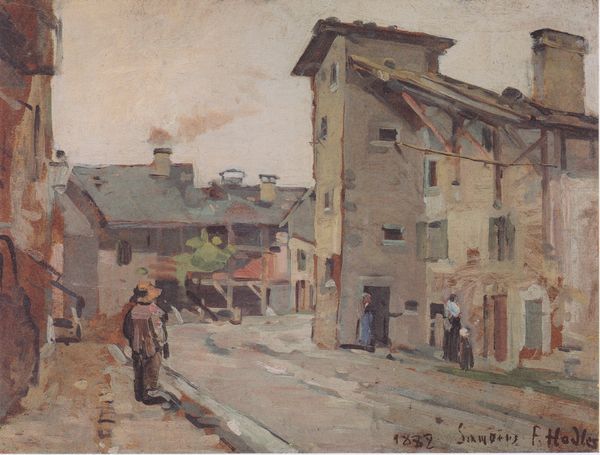
painting, plein-air, oil-paint
#
painting
#
impressionism
#
plein-air
#
oil-paint
#
landscape
#
cityscape
Copyright: Public Domain: Artvee
Curator: Claude Monet painted "Rue de la Bavole, Honfleur" in 1864. The scene depicts a street in the French harbor town of Honfleur. Editor: My first impression is of stillness and nostalgia. The light is so soft, and the figures seem caught in a quiet moment. It’s as if time itself slows down within the frame. Curator: Absolutely, it is a charming scene and it marks an interesting period for Monet. Consider his choice to paint it "en plein air," a process still somewhat novel at the time. This demonstrates his desire to engage directly with the urban landscape, capturing the light and atmosphere in real time, while on location, not just in the studio. Editor: The buildings themselves speak to that connection to the moment. The unevenness of the architecture, the varied textures. The signs are particularly evocative. The signage of 'Denrées' suggesting basic foodstuffs, all crafted to be not simply informative, but subtly persuasive to trade. Does the style of writing or images speak to trade and what the painter wants us to believe, in this modern context? Curator: That is astute! The visible brushstrokes in those areas underscore a handmade quality, emphasizing the locality and the artisan aspect of commerce during that era. Also consider the composition. Monet masterfully guides our gaze down the street, inviting us to explore not just the commercial activity, but also the way that the narrow passage affects the material exchange between townspeople. Editor: Note how the artist leads us with his composition. Observe the arrangement of the street and building as a sort of stage, that highlights how trade and domestic activities were being recorded visually, while offering clues about the relationship with one another. The painting also highlights the shadows created along the walls that suggest we see the artist grappling with these subjects. Curator: These observations on materials and representation allow us to comprehend Monet's revolutionary perspective. The everyday is deemed an important theme, that is in effect a challenge to the conventions and expectations within the artistic milieu of his era. Editor: It's fascinating to consider the way that light illuminates even ordinary buildings and trades, emphasizing the psychological effects. By acknowledging these images, we are acknowledging, both, material value and emotional investment within the local economy. Curator: It’s a remarkable portrayal of its time, from the perspective of Monet’s unique materiality. Editor: And the picture has provided a potent way for us to recall shared human moments, indeed.
Comments
No comments
Be the first to comment and join the conversation on the ultimate creative platform.
